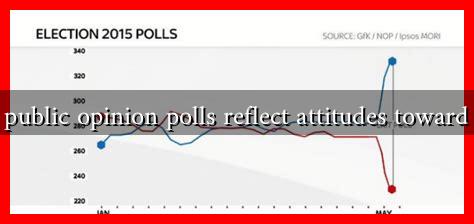-
Table of Contents
How Do Public Opinion Polls Reflect Attitudes Toward the Veil?
The veil, often associated with Islamic culture, has become a focal point of debate in many societies, particularly in the West. Public opinion polls serve as a valuable tool for understanding societal attitudes toward the veil, revealing a complex interplay of cultural, religious, and political factors. This article explores how these polls reflect public sentiment, the implications of these attitudes, and the broader societal context in which they exist.
The Veil: A Symbol of Identity and Controversy
The veil, which can take various forms such as the hijab, niqab, or burqa, is often seen as a symbol of modesty and religious devotion. However, it has also become a contentious issue, particularly in secular societies where it is sometimes viewed as a challenge to national identity and values. Public opinion polls help to gauge how different demographics perceive the veil, often revealing stark contrasts based on factors such as age, gender, and political affiliation.
Understanding Public Opinion Polls
Public opinion polls are surveys designed to measure the attitudes and beliefs of a population. They can provide insights into how people feel about various issues, including the veil. The methodology of these polls typically involves:
- Sampling: Selecting a representative group from the population.
- Question Design: Crafting questions that accurately capture public sentiment.
- Data Analysis: Interpreting the results to draw conclusions about broader trends.
For example, a 2021 Pew Research Center survey found that attitudes toward the hijab varied significantly across different countries. In Turkey, 63% of respondents viewed the hijab positively, while in France, a country with a strong secular tradition, 70% expressed negative sentiments toward it. These findings illustrate how cultural context shapes public opinion.
Factors Influencing Attitudes Toward the Veil
Several factors influence public attitudes toward the veil, as reflected in opinion polls:
- Cultural Background: Individuals from Muslim-majority countries often have more favorable views of the veil compared to those from secular or non-Muslim-majority countries.
- Media Representation: The portrayal of Muslim women in the media can significantly impact public perception. Negative stereotypes can lead to increased prejudice.
- Political Climate: In times of political tension, such as during discussions about immigration or national security, attitudes toward the veil can become more polarized.
Case Studies: Polls in Action
Several case studies illustrate how public opinion polls have captured changing attitudes toward the veil:
- France: In 2010, France became the first European country to ban the burqa in public spaces. Polls conducted before and after the ban showed a significant increase in support for the legislation, reflecting growing concerns about national identity and security.
- United States: A 2017 Gallup poll revealed that 60% of Americans believed that wearing a hijab was a personal choice, indicating a more accepting attitude compared to previous years, likely influenced by increased visibility of Muslim communities.
The Implications of Public Opinion
The attitudes reflected in public opinion polls have significant implications for policy-making and social cohesion. For instance:
- Legislation: Polls can influence lawmakers to enact or repeal laws related to religious attire.
- Social Integration: Negative attitudes can lead to social exclusion and discrimination against Muslim women who choose to wear the veil.
- Community Relations: Understanding public sentiment can help foster dialogue and improve relations between different cultural groups.
Conclusion: The Power of Public Opinion
Public opinion polls are a crucial tool for understanding societal attitudes toward the veil. They reveal the complexities of cultural identity, religious expression, and social dynamics. As societies continue to grapple with issues of diversity and inclusion, the insights gained from these polls can inform policies and promote greater understanding among different communities. Ultimately, recognizing the nuances in public sentiment is essential for fostering a more inclusive society.
For further reading on this topic, you can explore the Pew Research Center’s extensive studies on global attitudes toward Islam and the veil here.


